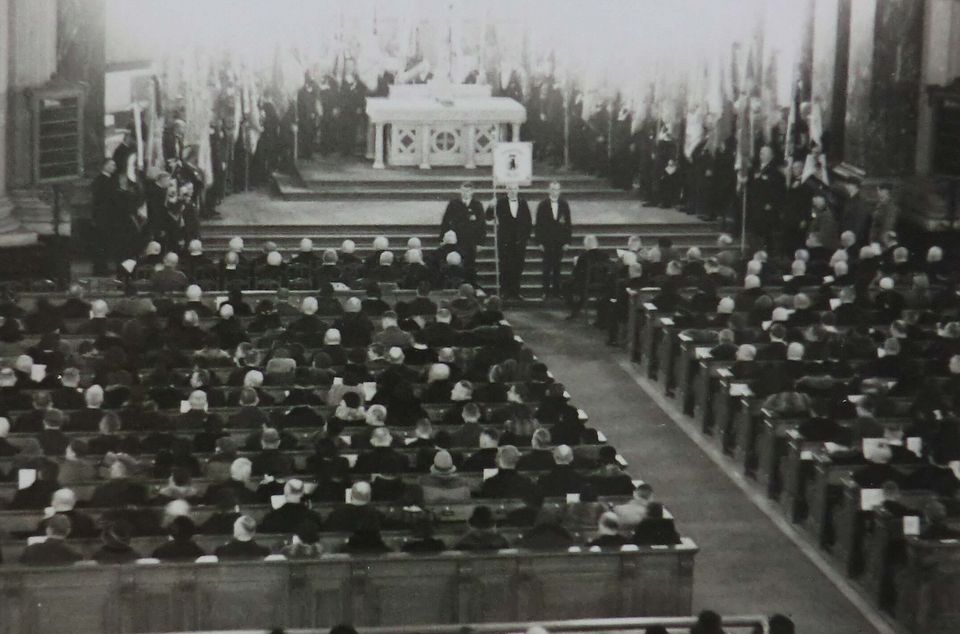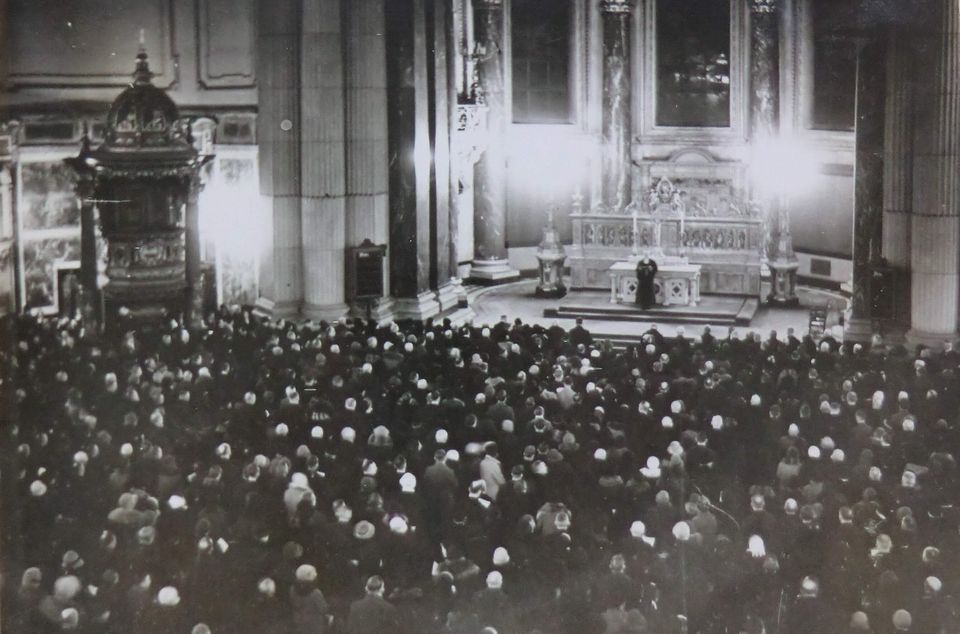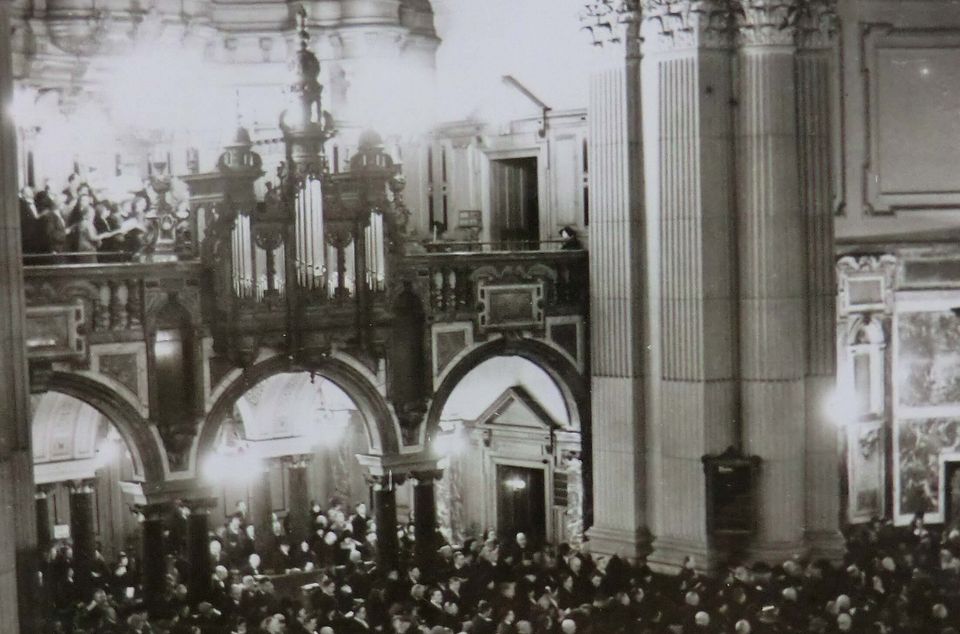History
The history of Berlin's cathedral parish is as chequered as that of its buildings. In 1450, the Erasmus Chapel was consecrated as the court church in the then new palace.
In 1465, Pope Paul II confirmed the collegiate foundation that had been established here. Elector Joachim II turned the church into a cathedral foundation and endowed it with rich furnishings. After he introduced the Reformation in Brandenburg in 1539, the cathedral foundation became Protestant-Lutheran in the 1550s. Elector Joachim Friedrich converted the cathedral foundation into a parish church, the ‘Oberpfarr- und Domkirche’, in 1608. However, it was not until Elector Johann Sigismund's conversion from Lutheranism to Calvinism that a Reformed congregation developed in Berlin-Cölln, which was granted the cathedral church as a place of worship in a document from 1632.
In the course of Prussian state reforms, the statute of 16 May 1812 established the Cathedral Council, which bore responsibility for both secular and spiritual work. This parish committee (that still exists today) now had two members elected by the Cathedral parish for the first time.
With the creation of the Prussian Union in 1817, the Cathedral had become firmly associated with the Lutheran and Reformist parish community. The Cathedral Parish was classified as the ‘first union parish’. From 1817 onwards, any such accession to the parish – which as a so-called ‘personal parish’ had no fixed diocese – had to be expressly declared as it still does today. The castle rectorate was a particular highlight. Between 1858 and 1919, this parish community consisted of castle inhabitants with the exception of the Royal family itself, and was cared for by a chaplain who was both Court and Cathedral Dean at the same time.
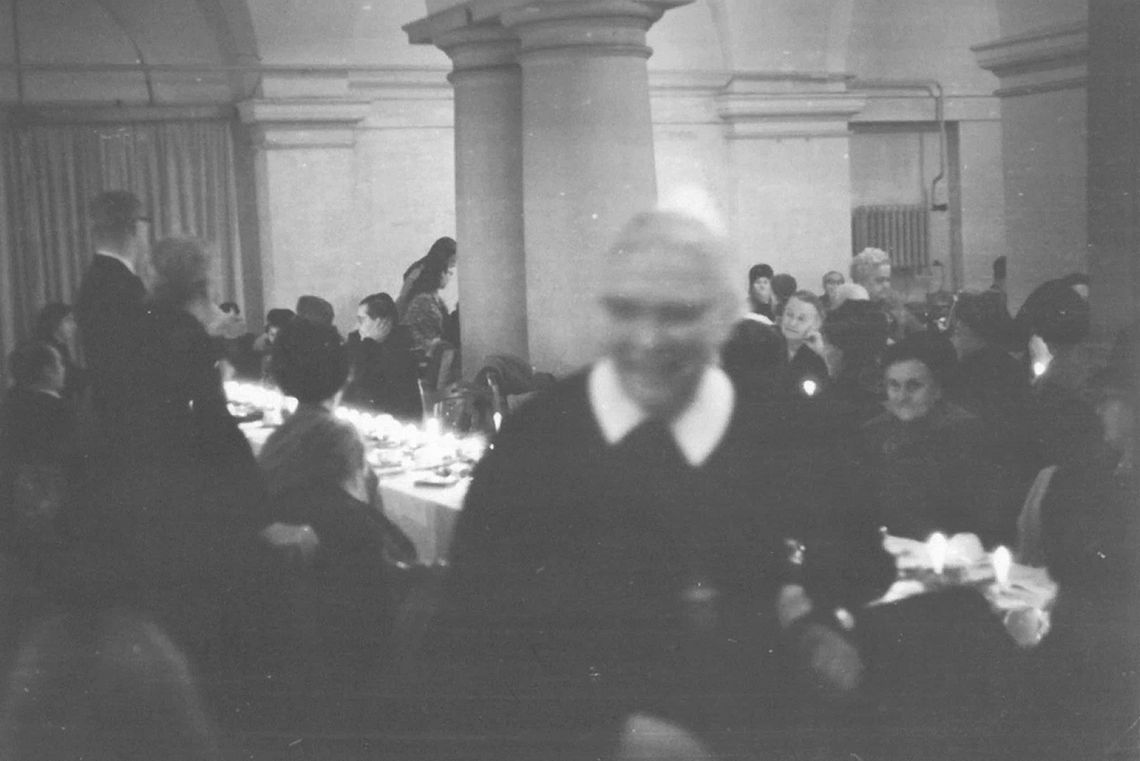
The parish, which saw significant growth as a result of the Industrial Revolution and the creation of the German Empire in the course of the 19th century, comprised individuals of all social classes: in addition to members of the nobility and bourgeoisie, members also included so-called manual workers and day labourers. The revolution of 1918 and the subsequent end of the monarchy represented a significant turning point for the Cathedral parish, which was very closely linked with the Imperial Court. Even during the time of the Weimar Republic, which was met with great scepticism, the link to the Hohenzollern family remained strong. When former Empress Auguste Viktoria died in 1921, Wilhelm II. was given photos of the Cathedral that had been decorated for the memorial service ‘as a sign of our unwavering devotion’ (Cathedral Archive, Vol. 1, No. 3106). The Hohenzollern family crypt remained the private property of the former ruling house, and was not accessible to the public.
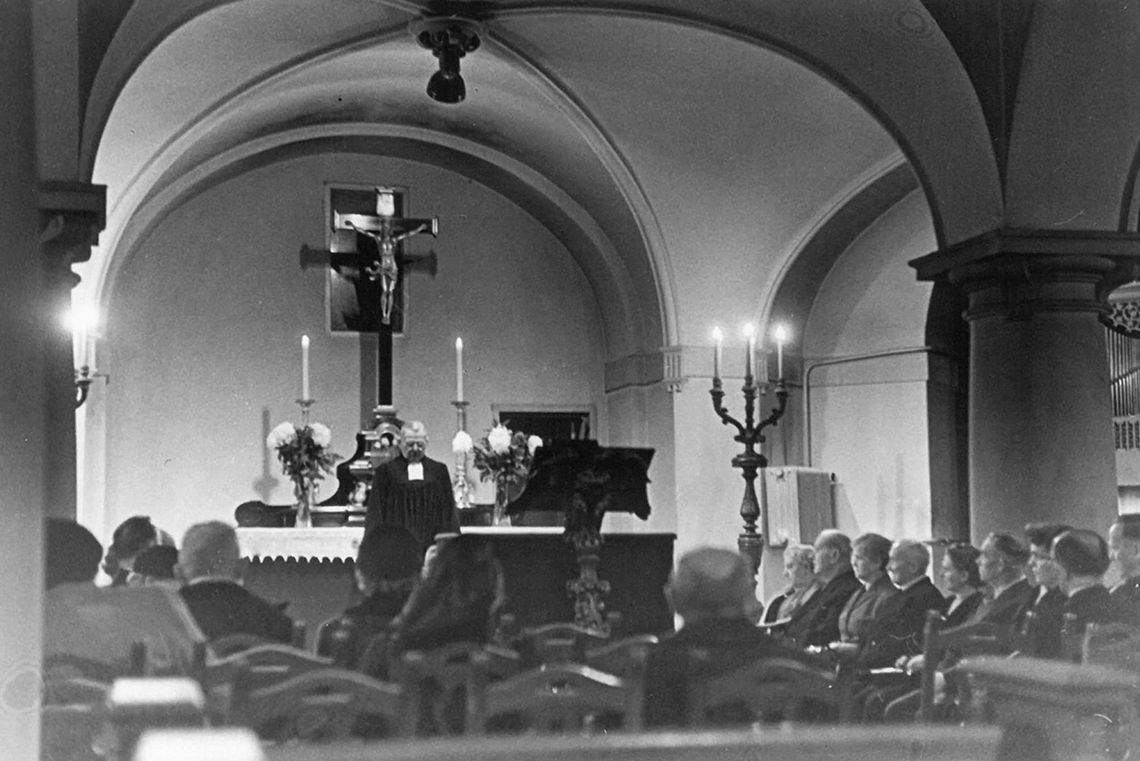
During the time of the National Socialist dictatorship, Berlin Cathedral – as the country's key Protestant church – found itself torn between successful, state-run interference and resistance by the Cathedral parish. The parish resisted, for example, the appointment of Friedrich Peter, an exponent of the ‘German Christians’, to the position of Cathedral Dean. On the other hand, the Cathedral was misused as a platform for symbolic celebrations, which were intended to show the Protestant church and the National Socialist state standing shoulder to shoulder. Events such as the inauguration of the ‘Imperial Bishop’ in the year 1934 and the church marriages of key National Socialist figures such as Hermann Goering in the year 1935 fall within this period. A conclusive assessment of the Cathedral's role in the Third Reich has yet to be made. The entire topic is currently the subject of a more detailed investigation as part of a research project by the Humboldt University in Berlin.
After the destruction of the cathedral in 1944 and in the post-war period, up to 1,000 worshippers gathered in the crypt church for Sunday services. The division of the city due to the construction of the Berlin Wall placed a heavy burden on the congregation. From 1963, the West Berliners used the newly built chapel of the Kaiser Wilhelm Memorial Church and then, from 1980, their own community centre in Müllerstraße, in the cathedral cemetery there. In the eastern part, the congregation continued its work in the destroyed cathedral, although the crypt church had also become dilapidated in the meantime. The baptismal and wedding church, which was only rebuilt after 1980, provided the congregation with a new place of worship.
In the GDR, after lengthy discussions, the government decided to rebuild Berlin Cathedral in 1975. After the intervention of the cathedral church council, the baptismal and wedding church was not demolished. Instead, the monumental church, which had become very dilapidated, was demolished. The dome and the four corner towers were reconstructed in a much simplified form and each reduced in height by 16 metres. This reconstruction, which included the restoration of the interior, lasted until 1993 and was financed by the Evangelical Church in Germany and the Federal Government.
It took time for the two communities to grow together after 1989. A great deal of understanding was required on both sides in order to walk this not always easy path together. The cathedral parish is growing steadily and now has around 1,800 members.
